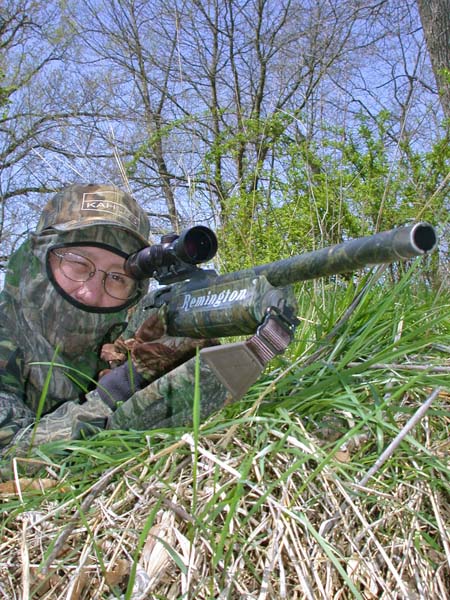John Phillips | April 23, 2012
One of the hardest gobblers to set-up on and call-to is the gobbler with hens. This gobbler already has what he’s looking for and is reluctant to leave his harem just to meet and mate with a new lady friend. Probably the first few times you call, he won’t come. But if you continue to call, his curiosity will get the best of him. Here are a couple of things you can try to take this gobbler.
* Follow the gobbler through the woods as he moves with his hens. Stay out of sight, but continue to call to the gobbler using loud, demanding calls. Often, a gobbler will leave his hens or encourage his hens to walk with him to find the hunter he assumes to be another hen.
* Forget trying to talk to the gobbler, and instead talk directly to the boss hen. When you start giving a demanding call, the boss hen may answer your call as if to say, “This is my gobbler. You leave him alone.” Then talk directly to the boss hen, attempting to intimidate her and make her angry. When she comes hunting the caller, she’ll usually bring the harem of hens with her, and the tom should accompany her.
* Talk with both hen and the gobbler. If the boss hen is ready to be bred, she may answer your aggressive calling but not leave the gobbler to investigate. When the hen calls, call back aggressively. The instant the tom quits gobbling, start calling to him. If you want to talk to both, each time one of them calls, call back, a practice that should excite either the hen or the gobbler.
Calling a Gobbler across Water:
Turkeys generally don’t like to fly-across water to meet a hen, but if there’s a turkey gobbling on the other side of a creek that you can’t swim or refuse to wade, there are two techniques you can try.
* Start calling aggressively with cuts, cackles and excited yelping. Put some emotion in those calls. You want to make the gobbler think there’s a hen that’s so excited about breeding that she just can’t stand it. Frequently, a gobbler will become just as excited and drum and strut in hopes of getting the hen to fly across the creek to him. Once you’ve got the turkey fired-up and know he can’t see you, start calling and moving away from the edge of the riverbank to create a picture in the gobbler’s mind of a hen that’s ready and wanting to breed. But since the tom won’t fly across the creek to meet her, she’s walking off and locating a gobbler on her side of the water. Hopefully, the gobbler won’t be able to stand the pressure of the hen walking away and will fly across the creek. Be sure to listen for the gobbler’s beating wings, because sometimes a longbeard will fly right to the caller.
* Imitate a one-man band, cutting and cackling with a diaphragm call, while yelping and cutting on a box call, if a turkey’s hung-up across water. You must paint a picture in that gobbler’s mind of a harem of hens that are excited and ready to breed. Then change calls, and sound like a whole flock of hens, each with a different voice and excited about mating. A gobbler that’s worried about other toms breeding those hens he hears may fly across the creek for a date.






























